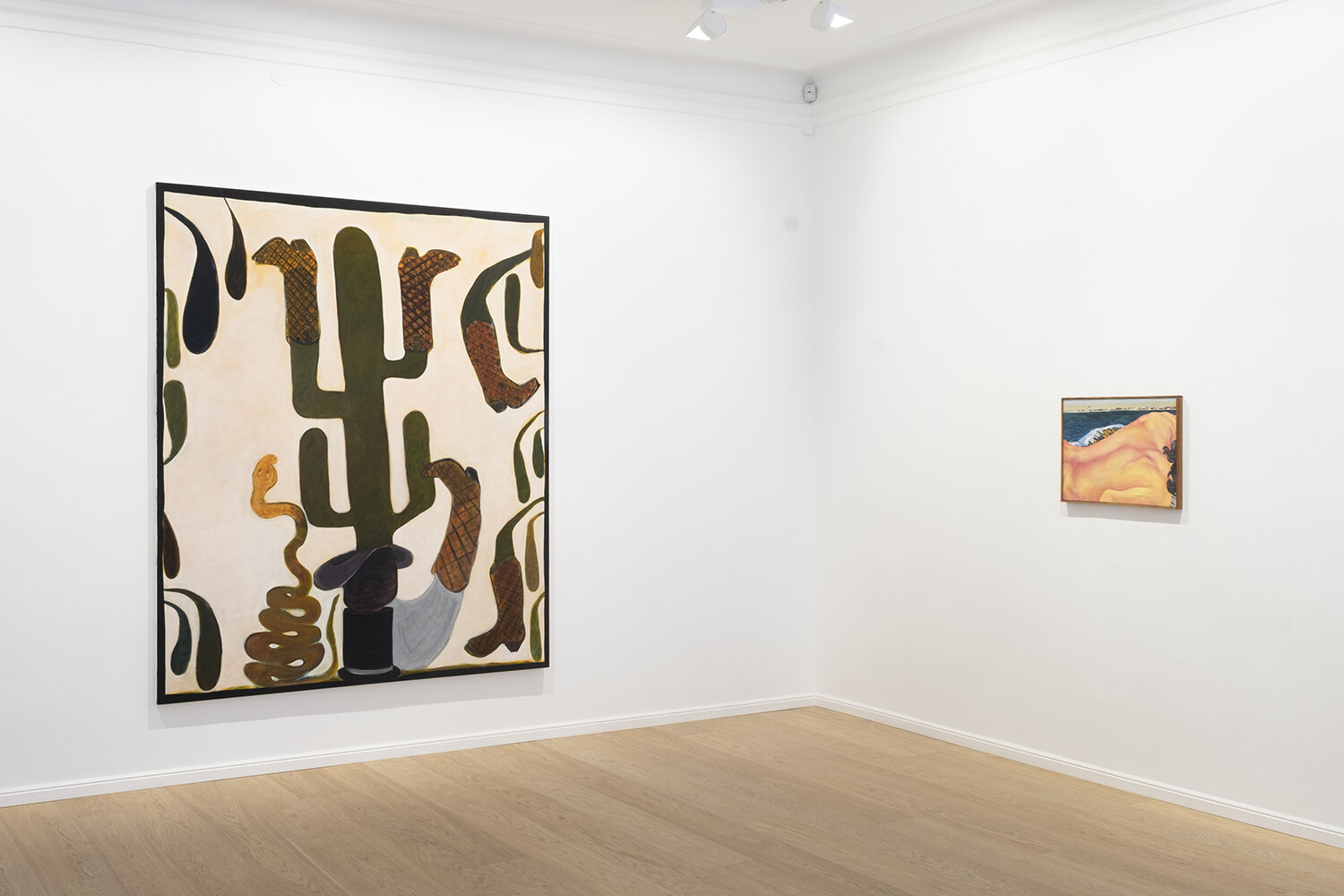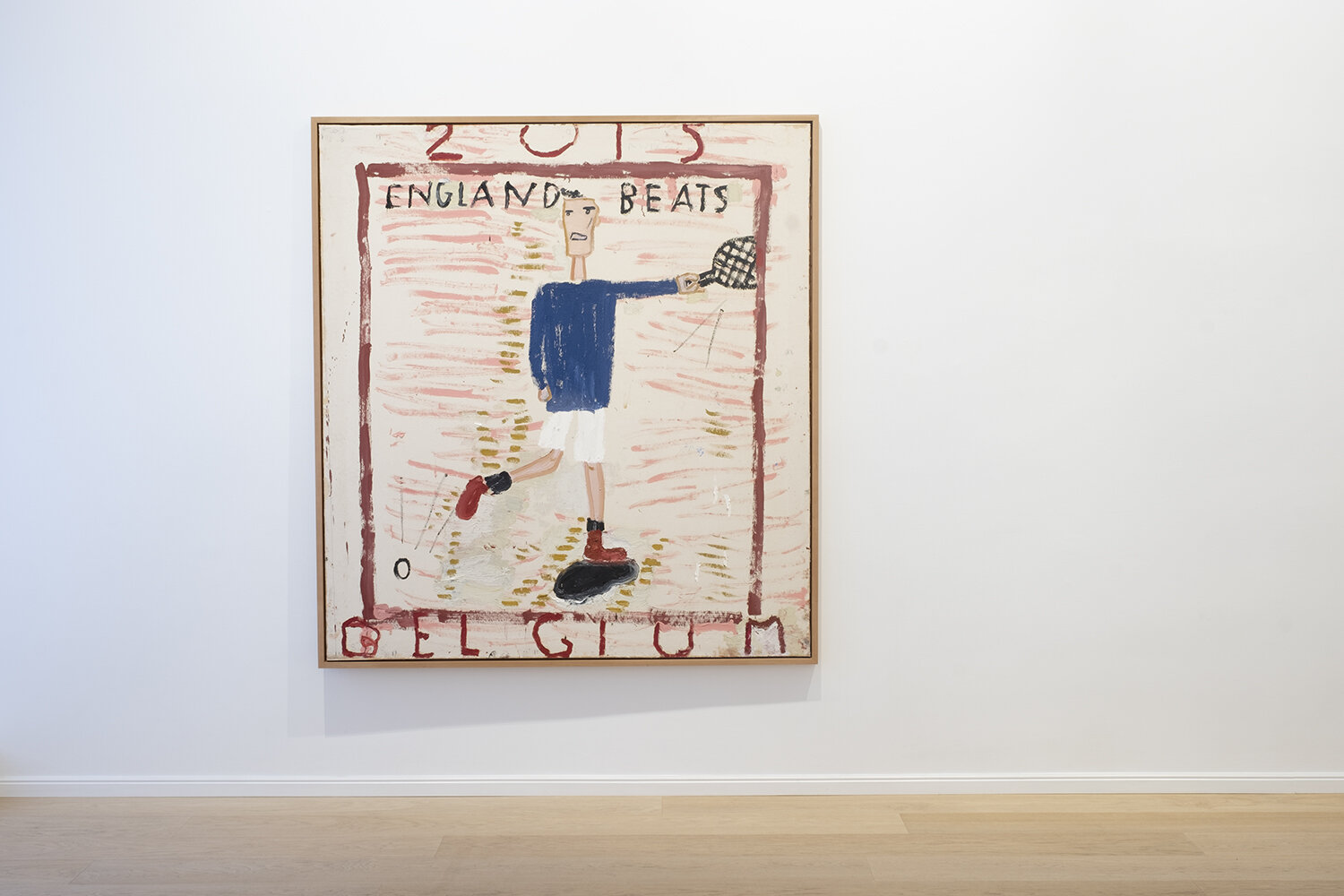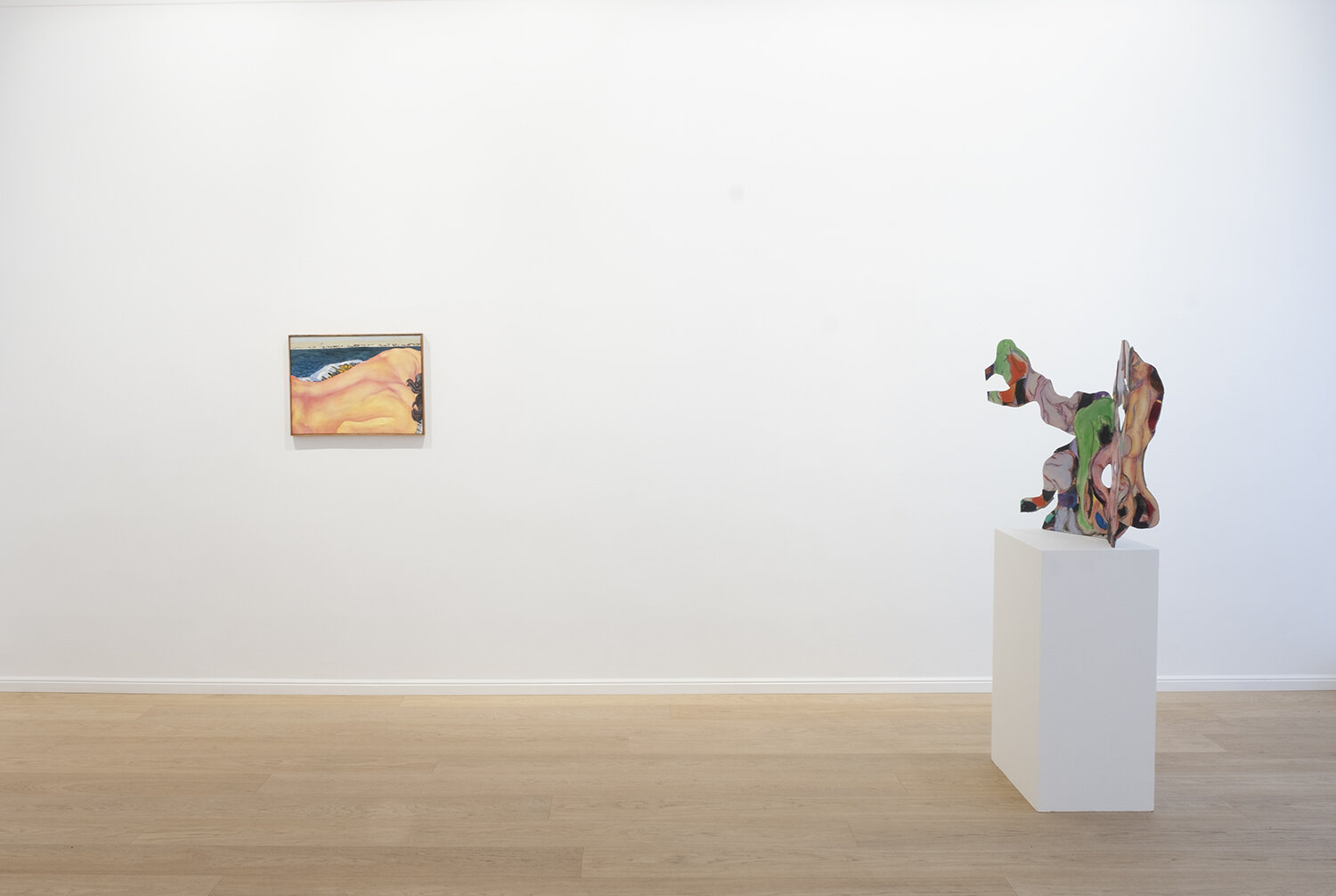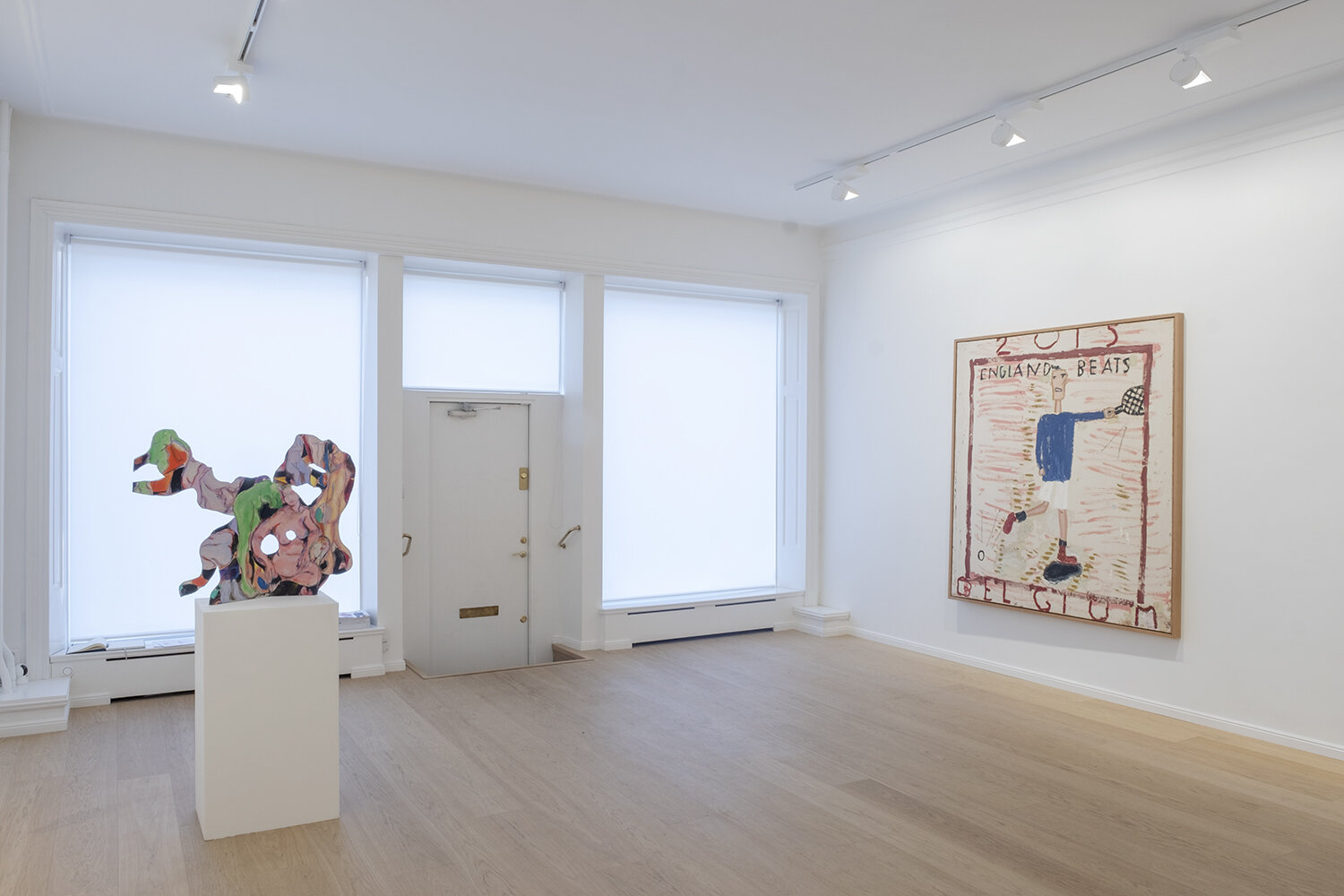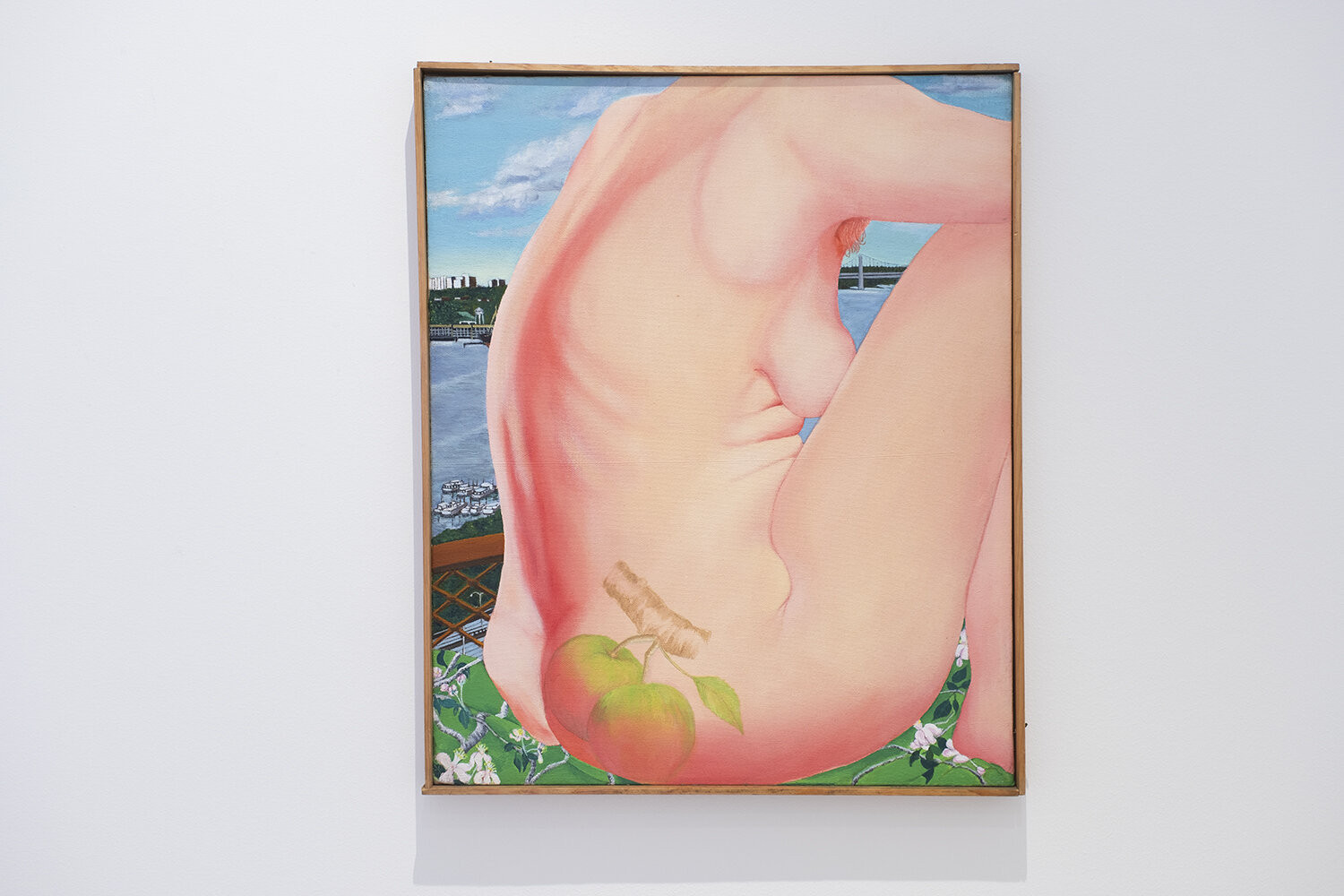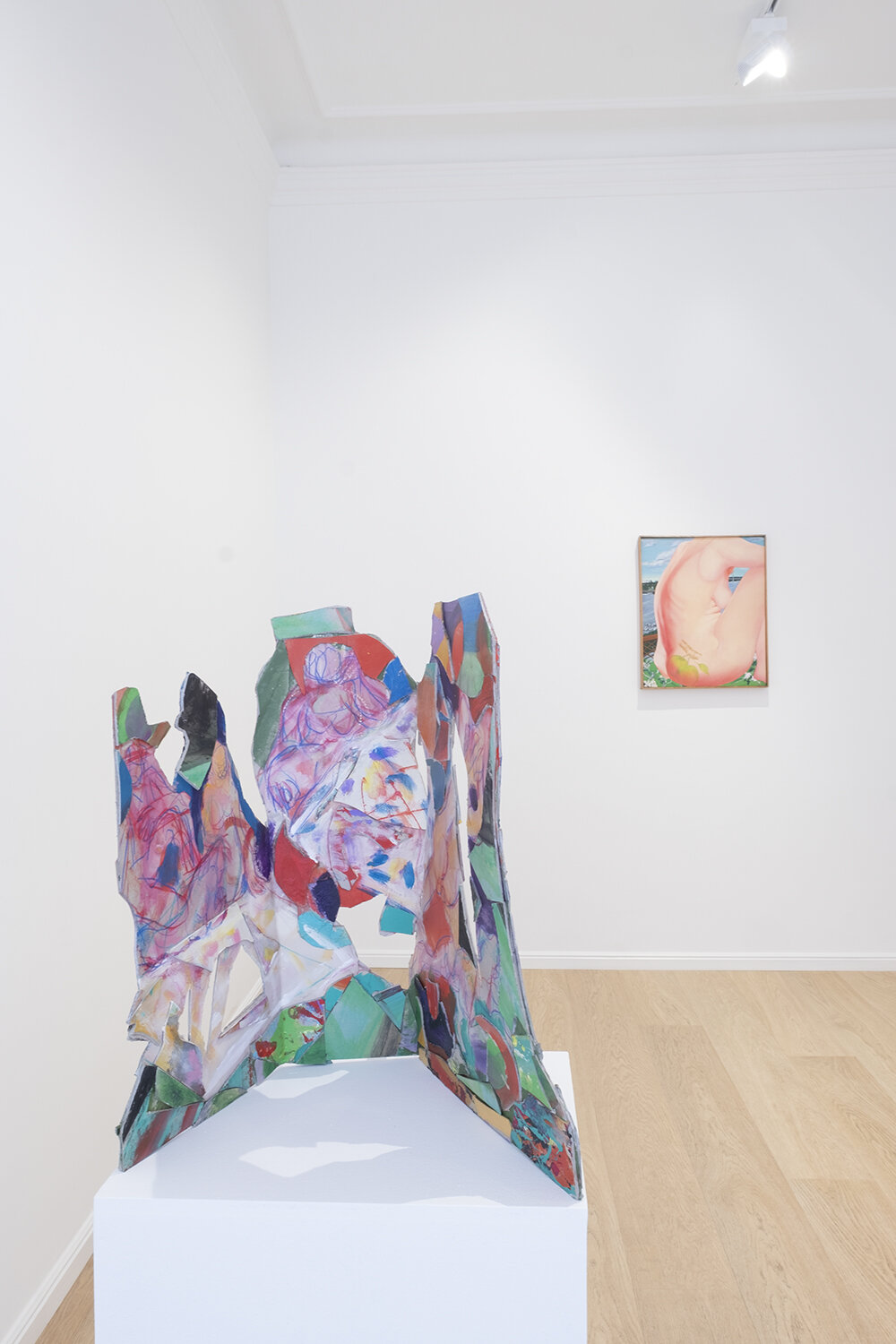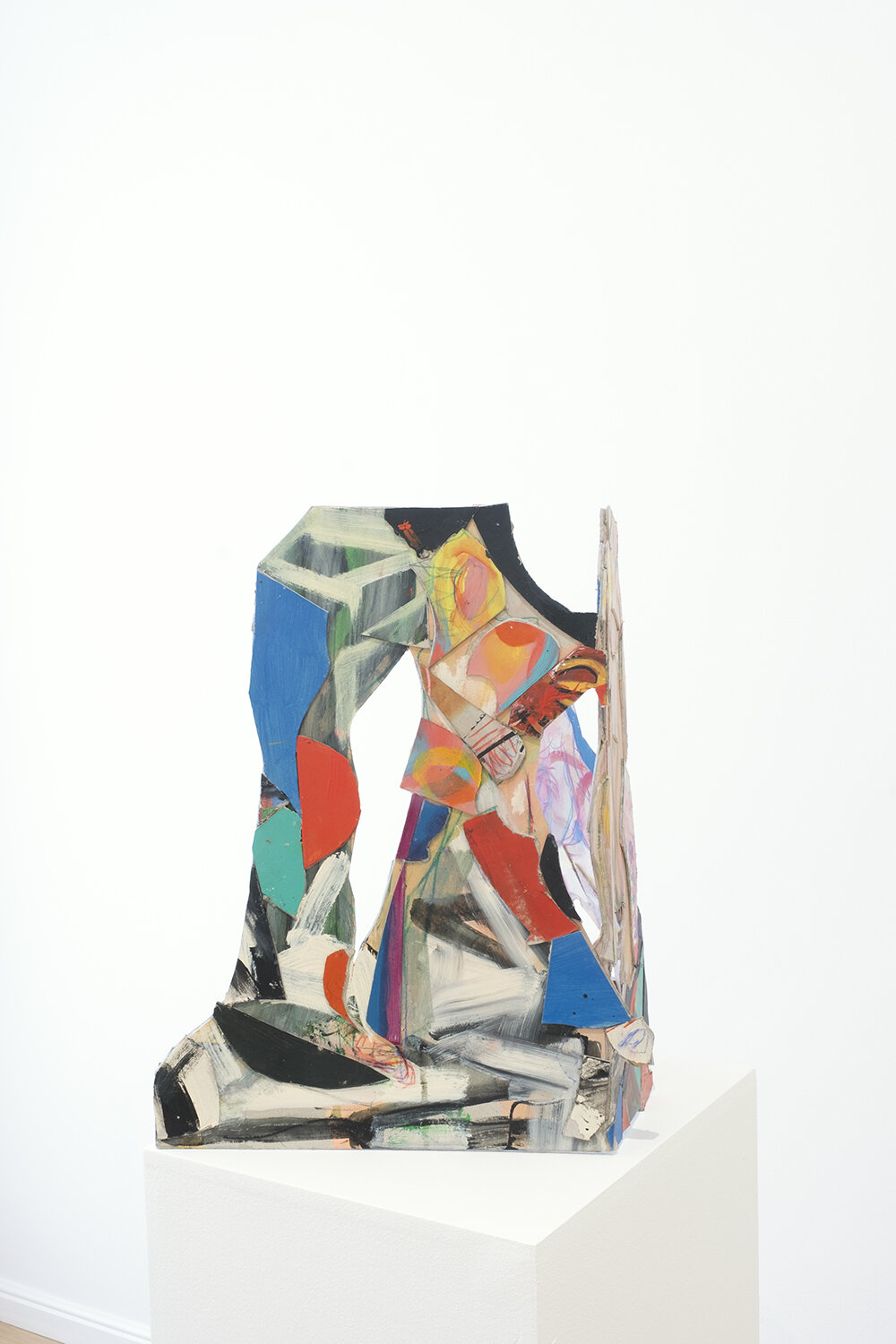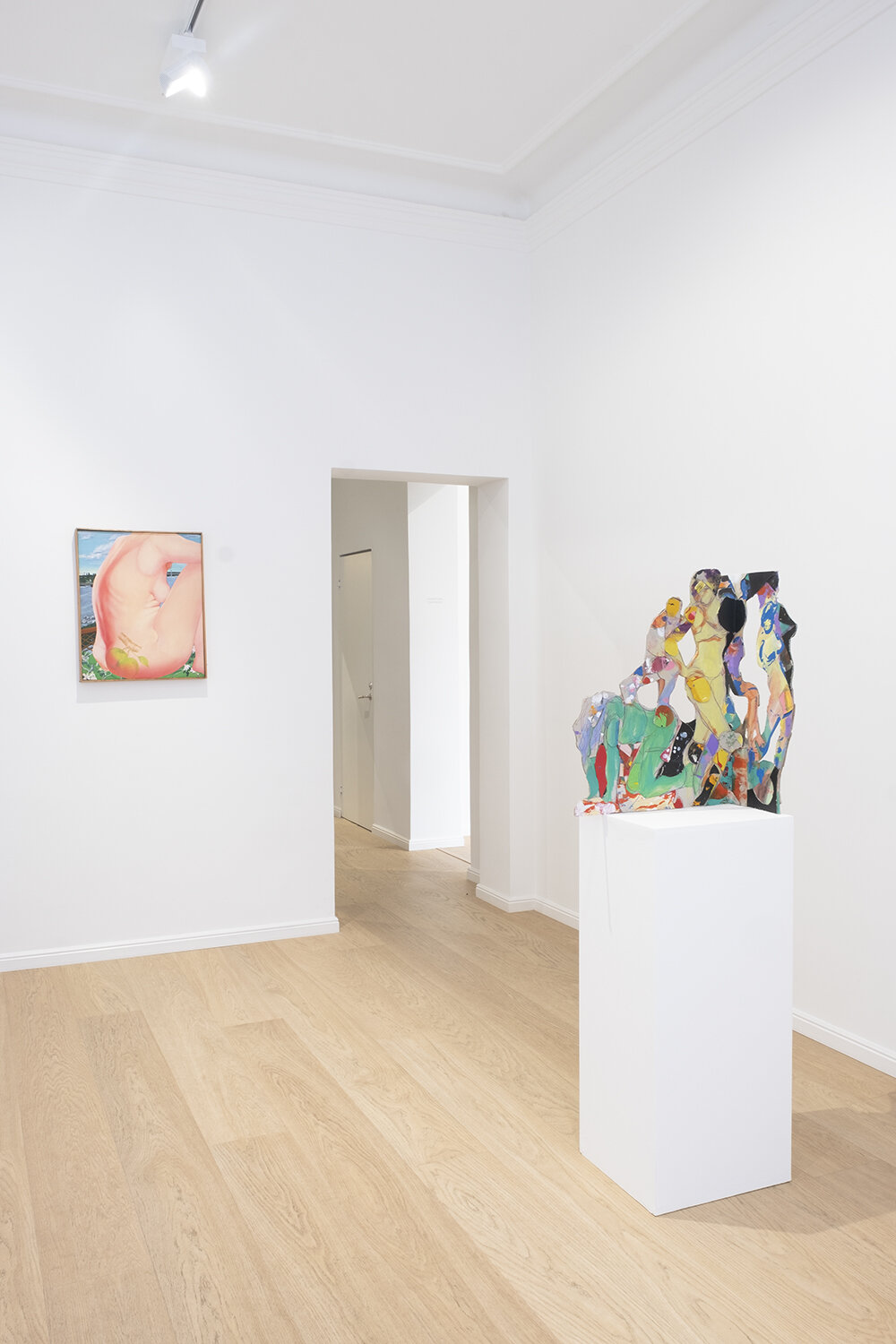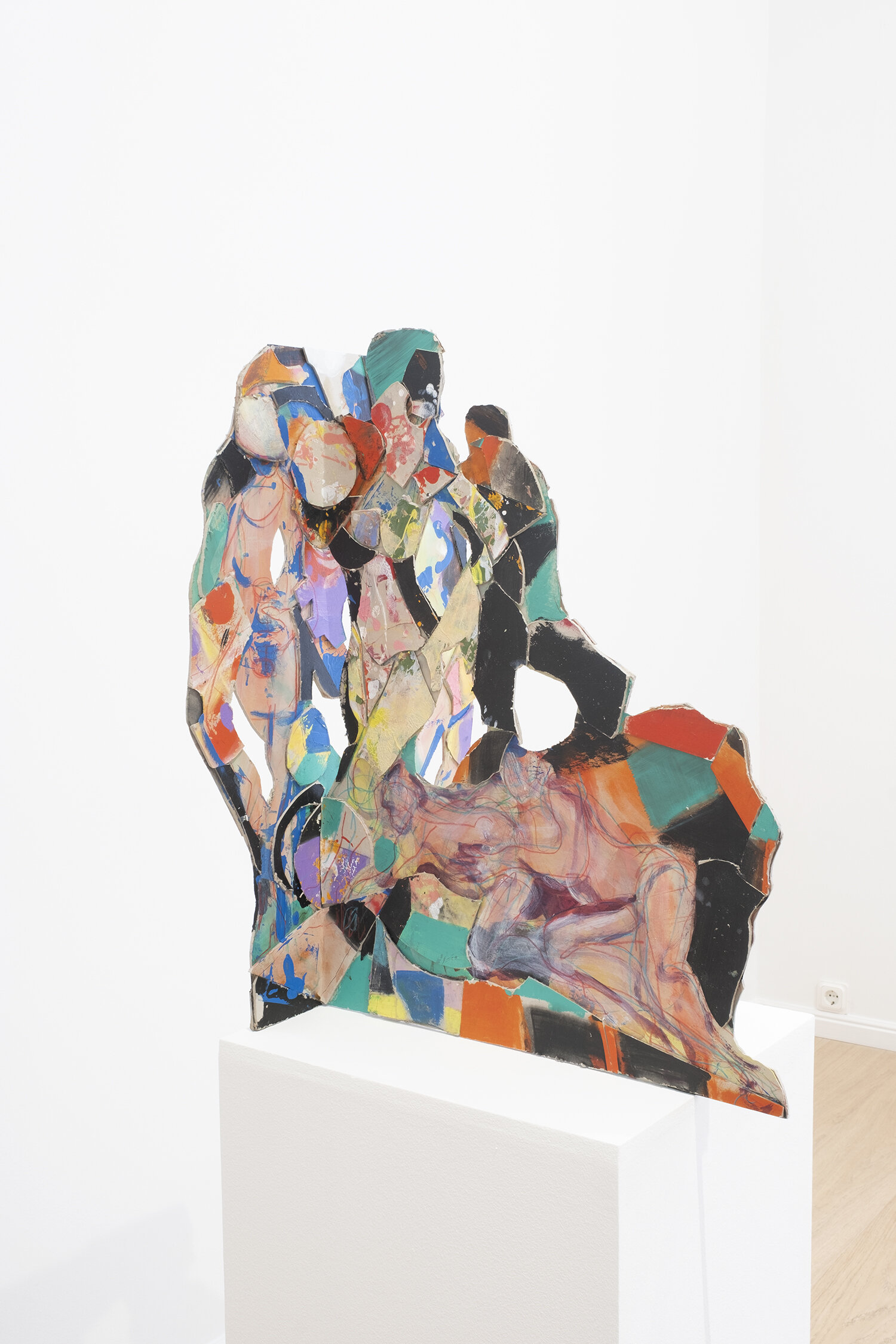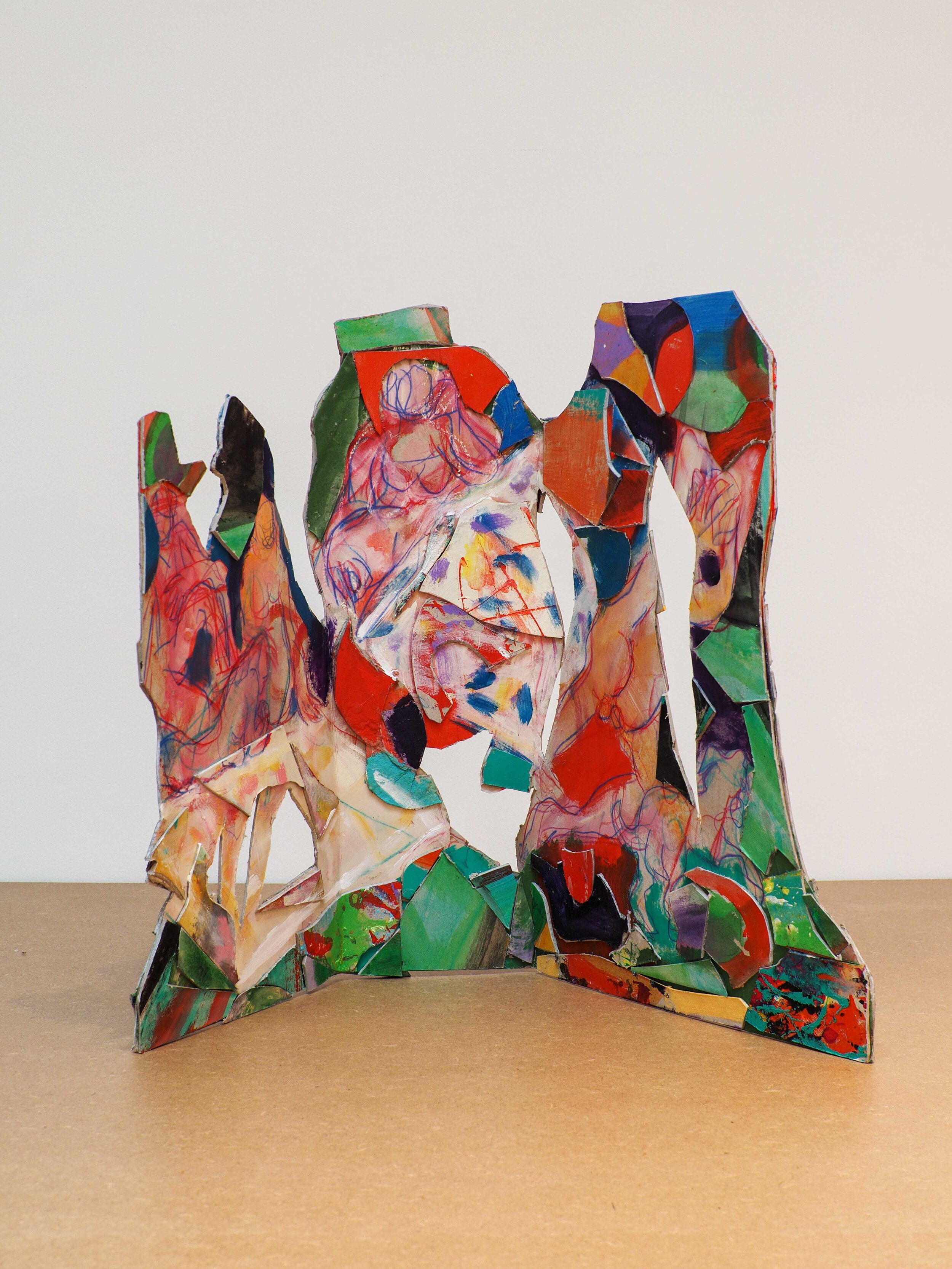A B O D Y A P A R T
Martha Edelheit / Ryan Mosley / Anne Ryan / Rose Wylie
13 March – 17 April 2021
Larsen Warner is pleased to present the group exhibition A Body Apart, featuring the work of Martha Edelheit, Ryan Mosley, Anne Ryan and Rose Wylie. The exhibition as a whole can be viewed as an imagined body, split and fragmented, with each of the artworks selected representing a morphing part of a disconnected human form. Spanning diverse stylistic and conceptual approaches, the works on view demonstrate how the human figure can be reimagined and reconfigured, representing the broad plethora of bodily experience as well as the expressive potential of the human body within contemporary painting and sculpture.
Martha Edelheit was born New York City in 1931, she lived there until moving to Sweden in 1993 where she now lives and works outside of Stockholm. She is known as a pioneering feminist artist whose work of the 1960s addresses female desire, the body, and skin as a double “canvas” for tattoo imagery. Edelheit studied at the University of Chicago, New York University and Columbia University in the 1950s under the tutelage of important teachers such as the artist Michael Loew and art historian Meyer Schapiro. She established herself in the centre of the downtown avant-garde, becoming a member of the Tenth Street artist-run space, the Reuben Gallery, where her first solo show was held in 1960. She, like other members Jim Dine, Allan Kaprow, Claes Oldenberg, and Robert Whitman, were pushing at the boundaries and definitions of sculpture, painting, and art-making through Happenings and experimental objects.
Martha Edelheit, View of George Washington Bridge, 1975, Acrylic on canvas, 61 x 51 cm. © the artist
Martha Edelheit, Jones Beach, West End, 1972-73, Acrylic on canvas, 46 x 61 cm © the artist
Edelheit became an essential voice whose work implicitly challenged social expectations of women as well as formalist paradigms and traditional notions of figurative painting and the nude. In the 1960s, Edelheit began to work from life. She was captivated by the experience of working with models in the studio, and the interaction between artist and model that allowed her access into people’s personal lives and challenges. In a landmark article on feminist art, writer Maryse Holder said;
“One of Edelheit’s talents is to offer a portrait of a personality through the body. She removes the female from the abstract realm of current female flesh fashions to show us familiar bodies. What Edelheit, who is acutely attuned to her models, was doing in the act of her painting was letting the woman’s life define her —her existence was her essence.”
Edelheit does all of this with a sense of humour: showing real people in familiar, non-scenic New York locations that represent ‘Edelheit’s New York’ with the flesh of the figures that Edelheit depicts becoming places where the dreams and fantasies of the models emerge.
Ryan Mosley’s (b.1980, UK) is an artist who continues to radically experiment with the known tropes of figurative painting and portraiture, skilfully creating paintings that embody their own contradictions and play with the audience’s perception of both fact and imagination. Included in A Body Apart is Mosley’s painting Target Practice. Painted in 2010 during the artists residency at Grand Arts in Kansas City, USA. It depicts a large cactus that appears to be growing from within a bowler hat, sprouting three cowboy booted legs that could have once been attached to a Southwestern frontiersman. Cactus leaves continue to grow from around the edge of the painting as if gesturing and beckoning to the viewer. Mosley has noted “I’ve always been interested in figurative painting, and cacti are the most figurative plants…It’s like they’re waving at you.” There is a stage-like quality to the painting, with a very shallow depth of field that adds to a sense of dislocation. This visual trope goes back to the artists time at the National Gallery in London, where Mosley explored the works of artists such as Duccio and Giotto. The pre-Renaissance perspectival space tended to be much flatter and it was this very graphic space that Mosley was keen to explore.
Ryan Mosley, Target Practice, 2010, Oil on linen, 223 x 188 cm © the artist
Anne Ryan (b. Limmerick, Ireland, lives and works in London) is a contemporary artist creating highly coloured, constructed paintings that focus on figures engaged in a variety of activities – her subjects dance, party, pose and generally indulge themselves, in scenarios that draw on diverse sources from visual culture and the world around her. Included in the exhibition are three of Ryan’s renowned ‘cutouts’, – vibrant, three-dimensional paintings made from card, collage, canvas, ceramic and metal. Many of her cutouts focus on the physicality of the human form – often depicting groups of figures dancing, posing, swimming, frolicking in the woods, even cutting loose in a mosh pit – and are inspired as much by scenes found in nightclubs and cinema as by classical painting and sculpture. The three works presented in A Body Apart where recently exhibited as part of Ryan’s first major institutional show in the UK, Earthly Delites at Hasting Contemporary. Ryan has said about the cutouts;
“I love the freedom they give me. Suddenly you’re not tied to the four walls of a canvas … It’s almost like not painting. I say to my students: stop painting and then let’s paint. And it’s that idea that we stop assuming what we know about painting and then let’s do something, OK? Let’s make then. And that’s when I’m really engaged with.“
Anne Ryan, Commanders of Chaos, 2019, Acrylic and collage on card cutout, 60 x 50 x 40 cm © the artist, courtesy Greengrassi
Anne Ryan, Earnest Men / Picknickers and Dog, 2019, Acrylic and collage on card cutout, 50 x 50 x 40 cm © the artist, courtesy Greengrassi
Anne Ryan, Warrior in Woolworths, 2019, Acrylic and collage on card cutout, 73 x 92 x 30cm © the artist, courtesy Greengrassi
British artist Rose Wylie (b. 1934) creates wittily observed and subtly sophisticated paintings and drawings that act as meditations on the nature of visual representation. Drawing from such wide-ranging cultural arenas as film, fashion photography, literature, mythology, news images and sports, Wylie paints colourful and exuberant compositions that are uniquely recognisable and are striking for their spontaneity, energy and freedom. Like Philip Guston or Jean-Michel Basquiat, her figures seem crudely wrought and rounded. Engaging with the aesthetics of cartoon, Wylie unashamedly ramps up certain figurative elements in her paintings. With thick outlines and exaggerated features, their limbs often caught mid-motion, Wylie arranges elements of an imperfectly recollected image;
“If a man is running you might see little blobs of sweat or whizzing marks…A realist would never do that. They just paint what they’re looking at. But if you go along with Matisse, as children do, you use everything. If a child wants to draw a mother with a big head, for emphasis or because the head has a particular significance, then they’ll draw a figure with a big head. It’s breaking a rule, but it’s only the rule of proportion, a realist rule. That’s what I do”
Rose Wylie
Rose Wylie, Andrew Murray, 2015, Oil on canvas, 183 x 167 cm © the artist
